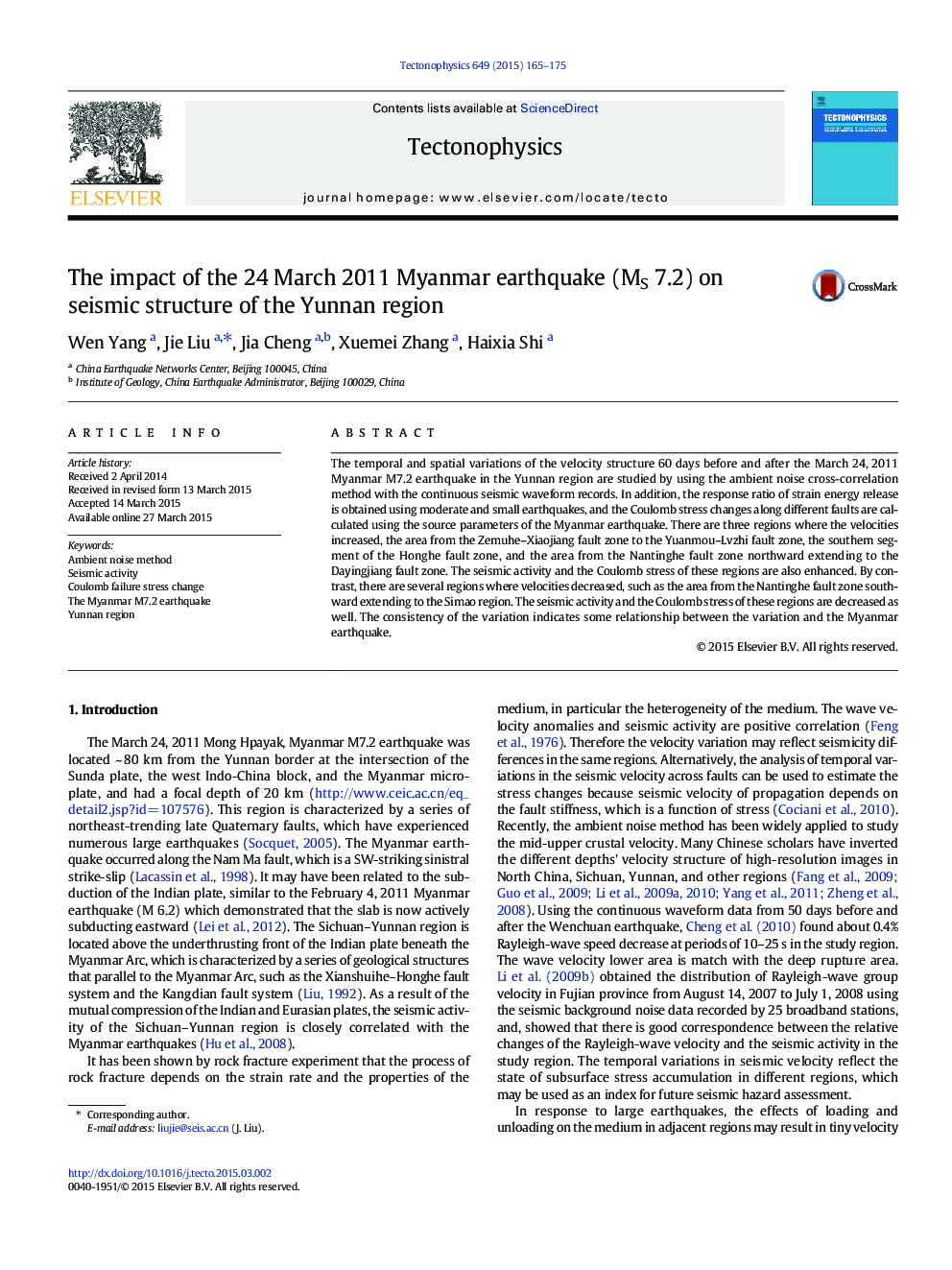| Article ID | Journal | Published Year | Pages | File Type |
|---|---|---|---|---|
| 4691670 | Tectonophysics | 2015 | 11 Pages |
Abstract
The temporal and spatial variations of the velocity structure 60Â days before and after the March 24, 2011 Myanmar M7.2 earthquake in the Yunnan region are studied by using the ambient noise cross-correlation method with the continuous seismic waveform records. In addition, the response ratio of strain energy release is obtained using moderate and small earthquakes, and the Coulomb stress changes along different faults are calculated using the source parameters of the Myanmar earthquake. There are three regions where the velocities increased, the area from the Zemuhe-Xiaojiang fault zone to the Yuanmou-Lvzhi fault zone, the southern segment of the Honghe fault zone, and the area from the Nantinghe fault zone northward extending to the Dayingjiang fault zone. The seismic activity and the Coulomb stress of these regions are also enhanced. By contrast, there are several regions where velocities decreased, such as the area from the Nantinghe fault zone southward extending to the Simao region. The seismic activity and the Coulomb stress of these regions are decreased as well. The consistency of the variation indicates some relationship between the variation and the Myanmar earthquake.
Keywords
Related Topics
Physical Sciences and Engineering
Earth and Planetary Sciences
Earth-Surface Processes
Authors
Wen Yang, Jie Liu, Jia Cheng, Xuemei Zhang, Haixia Shi,
